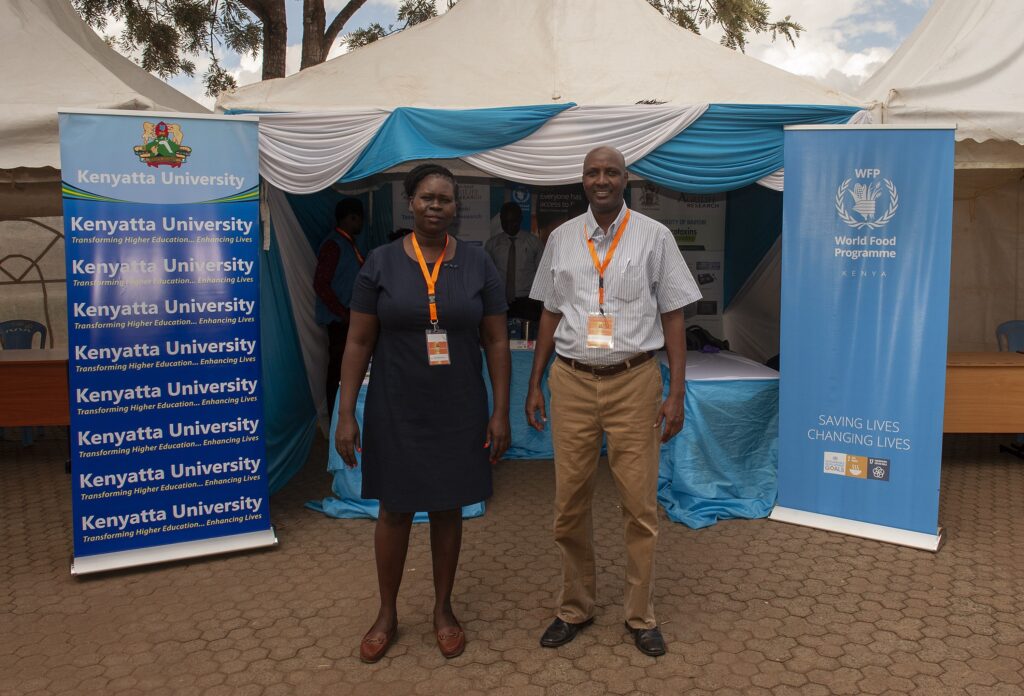In the recent years, experts have reported that agricultural food produce have been of poor qualities due to effects of drastic changes in weather patterns.
This has been made worst by Covid-19 pandemic restricting movements of people and farm inputs culminating into food shortages and unprecedented hunger across the globe.
In 2017, hunger was on the rise for the first time in a decade with 815 million people suffering from hunger, an increase of 38 million increase compared to the previous year.
Currently, fortification of foods is increasingly being promoted by donors as a promising solution that can easily involve private sector companies in the fight against hunger as well as malnutrition
Mary Nzomo
Around 155 million children were left with stunted growth as a result of poor nutrition, and levels of nutrient deficiencies alarmingly high.
Across Africa, two billion people suffered from micronutrient deficiencies, also known as “hidden hunger”.
At the same time, nutrition public funding has been shrinking while donors expressing their fatigue regarding renewed financial commitments to fight hunger.
Fighting ‘hidden hunger’
According to Mary Nzomo , Outgoing CEC for Agriculture in Trans- Nzoia, County, many benefactors are trying to find new solutions and sources of funding to fight hunger and malnutrition.
She said it is not a new thing since in 1990s, micronutrient fortifications have become a focus of national and international health agencies for addressing population-wide micronutrient deficiencies in low and middle-income countries.
“Currently, fortification of foods is increasingly being promoted by donors as a promising solution that can easily involve private sector companies in the fight against hunger as well as malnutrition,” she said.
She adds: “Indeed, private stakeholders involved in agriculture and nutrition encourages food fortification as it offers great potential to improve the diets of the populations that are vulnerable to micronutrient deficiencies.”

Guidelines on food fortification by both World Health Organization (WHO) Food and Agriculture Organization (FAO), defines food fortification as “the practice of deliberately increasing the content of an essential micronutrient such as vitamins and minerals (including trace elements) in a food, so as to improve the nutritional quality of the food supply and provide a public health benefit with minimal risk to health.”
On the other hand, Global Alliance for Improved Nutrition and Food Fortification Initiative (GAIN), explains food fortification as the practice of adding essential micronutrients to foods that are widely consumed by the general population or a target group.
All the organizations agree that it is a proven, cost-effective public health intervention that can reduce micronutrient deficiency, often termed ‘hidden hunger’, at scale, including among the poorest and most vulnerable people.
In recent months, the local nutrition communities have been working hard to mitigate against the COVID-19 pandemic adding fuel to the fire that is the hunger crisis.
These communities include; the Ministry of Health, the Kenya Bureau of Standards (KEBS), Cereal Millers Association (CMA), Kenya Association of Manufacturers (KAM), United Grain Millers Association (UGMA), leading oil processors, flour and rice milling companies.
Others are; premix suppliers, academic institutions and various international stakeholders’ development partners such as GAIN, FAO, WHO, Technical Assistance Accelerator Program (TAAP), World Food Programmme (WFP) among others.
According Leah Kaguara, Country Director for GAIN, the process of adding vitamins and minerals to staple foods has been observed as a cost-effective strategy to addressing micronutrient malnutrition in developing countries.
It is international policy that most countries are adopting at slow pace.
“This is as per the WHO recommendation to fortify foods in third world countries where diseases due to lack of pertinent nutrients are high compared to industrialized nations. Lack of sufficient amount of vitamin A and iron has the greatest impact on public health according to the global health body,” Ms Kaguara explained.
Role of Micronutrients in Human Health
Ms Kaguara stated that micronutrient malnutrition (MNM) is not just a major public health issue in the developed world, but it is even more important in low-income and developing countries.
The main forms of MNM include vitamin A, iron or iodine deficiency, but folic acid, vitamin D, selenium and zinc deficiencies, although less recognized, are important as well.
“Lack of those micronutrients represents a major threat to the health and development of populations, particularly children and pregnant women. They account for 7.3 percent of the global burden of disease,” she cautioned.
Providing the nutrients needed for growth, development, and the maintenance of healthy life, micronutrients have enormous, long-term positive impacts.
Lack of those micronutrients represents a major threat to the health and development of populations, particularly children and pregnant women. They account for 7.3 percent of the global burden of disease
Leah Kaguara
For example, improving health and wellbeing; protecting against anemia, stunting, and a whole host of other medical issues; and enabling proper physical and cognitive development among children and adolescents.
Ms Kaguara pointed out Universal Salt Iodization which is often cited as a fortification success providing iodine to vast numbers of people around the world over many decades, including here in Africa.
And parts of Africa have made progress in the implementation of various fortification programs over the last 20 years through multi-stakeholder partnerships, enriching widely-consumed foods like wheat, maize, salt and edible oils with essential micronutrients such as iron, iodine, vitamin A, folate (vitamin B9) and zinc.
Food fortification in Africa
In Sub-Saharan Africa where the prevalence of malaria, HIV, diarrhea diseases and other infectious conditions is high, MNM increases their severity and has a high health impact on children and pregnant women. Unfortunately, it affects all age groups, but young children, women of reproductive age and the elderly tend to be among those most at risk of developing micronutrient deficiencies.
For decades, considerable effort has been made to curb this “silent hunger”.

In recent years, a number of African countries have initiated food fortification programs, which have proven to be cost effective in addressing the micronutrient deficiencies.
In Kenya, support from various partners including Nutrition International, a national fortification program has been implemented to improve fortification capacity of small- and medium-size maize millers, and increase coverage and reach of fortified maize flour.
The Tanzanian government passed mandatory food fortification legislation in July 2011, and it provides a tax exemption for imported premix for its national fortification program. Such efforts by African countries are playing a vital role in addressing MNM in Africa.
Ethiopia Government endorsed large scale mandatory food fortification to prevent high burden of neural tube defects in the country. The Ethiopian Standard Council on 10th June, 2022, endorsed the mandatory fortification of edible oil and wheat flour, a decision that to save millions of lives and prevent the country’s high burden of neutral tube defects (NTDs).
Ethiopia is one of the countries with the greatest burden of micronutrient deficiencies. According to the Ethiopian Public Health Institute Micronutrient Survey report (2016), the prevalence of anemia adjusted for altitude among pre-school children, school age children and non-pregnant women of reproductive age was 34.4 per cent, 25.6 per cent and 17.7 per cent, respectively.
In South Africa, national fortification of salt with iodine, and wheat bread flour (herein referred to as wheat flour) and maize meal with multiple micronutrients has been mandated by law since 1998 and 2003, respectively.
In 2002, Nigeria successfully mandated a salt iodization program and the fortification of maize and cooking oil with vitamin A, and sugar and flour with iron.
Currently, there is a lack of current information available on how well these programs are performing, household coverage and intake of these fortified foods, and if vulnerable populations are being reached.
More effort and support are needed to ensure that these programs are implemented successfully to effectively reduce MNM.
